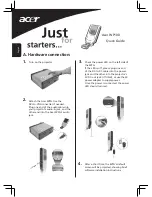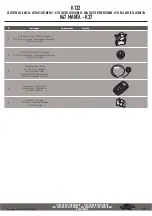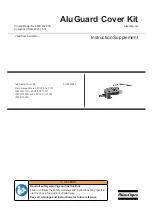
Operating Instructions
9
4.3 Installation instructions
Polarisation
The radar pulses transmitted by the radar sensor are electromagnetic waves. The plane polarisation is the
direction of the electrical content. By turning the device in the connection flange or screw-in socket, the
polarisation can be used to reduce the effects of interference echoes.
The location of the plane polarisation is marked on the devices process connection.
2
1
Fig. 5: Location of the plane polarisation
1 Mark on the threaded version
2 Marking bar
Installation position
Install the sensor in a position which is at least 200 mm from the vessel wall.
If you are unable to install it this far away from the wall, you should save the interference signal during the
commissioning procedure. This particularly applies if you expect material to accumulate on the vessel wall.
In this case we recommend that process of saving the interference signal is repeated at a later date when
material has accumulated.
Inflowing solids
The installation must not be too close to the inflow of solids since they could otherwise cause microwave
signal interference. The perfect installation position is opposite the filling point.
To prevent heavy built-up it should be placed as far as possible from a filter or dust extractor.
200 mm
(7.87")
Fig. 6: Radar sensor installation in the vessel roof










































